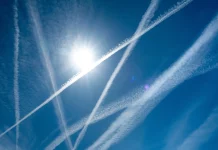Roughly two dozen possible new cases have been reported by U.S. spies and diplomats in the Austrian capital, more than in any other city except Havana itself.

Since Joe Biden took office, about two dozen U.S. intelligence officers, diplomats, and other government officials in Vienna have reported experiencing mysterious afflictions similar to the Havana Syndrome. U.S. officials say the number of possible new cases in the Austrian capital — long a nexus of U.S. and Russian espionage — is now greater than the number reported by officials in any city except for Havana itself, where the first cases were reported.
The exact cause of the ailments in Vienna, which U.S. government agencies formally refer to as “anomalous health incidents” or “unexplained health incidents,” remains unknown, but in response to the surge the C.I.A., the State Department, and other agencies are redoubling their efforts to determine the cause, and to identify the culprit or culprits.
A C.I.A. spokesperson said that the agency’s director, William Burns, was “personally engaged with personnel affected by anomalous health incidents and is highly committed to their care and to determining the cause of these incidents.”
Privately, Burns has called the maladies “attacks” rather than incidents. A State Department spokesman said, “In coordination with our partners across the U.S. government, we are vigorously investigating reports of possible unexplained health incidents among the U.S. Embassy Vienna community.”
What is the Havana Syndrome?
The Havana Syndrome derives its name from the Cuban capital, where C.I.A. officers and State Department employees first reported experiencing strange sensations of sound and pressure in their heads in 2016 and 2017.
Some of the patients said the sensations seemed to follow them around their homes, apartments, and hotel rooms in the Cuban capital. Some of the patients described feeling as though they were standing in an invisible beam of energy. Many of them suffered debilitating symptoms, from headaches and vertigo to vision problems.
Specialists at the University of Pennsylvania’s Center for Brain Injury and Repair used advanced MRIs to study the brains of forty of the original patients from Havana. They found no signs of physical impact to the patients’ skulls – it was as if they had “a concussion without a concussion,” one specialist told me—and the team detected signs of damage to their brains.
Who is responsible for the Havana Syndrome?
Senior officials in the Trump and Biden Administrations suspect that the Russians are responsible for the syndrome. Their working hypothesis is that operatives working for the G.R.U., the Russian military-intelligence service, have been aiming microwave-radiation devices at U.S. officials, possibly to steal data from their computers or smartphones, which inflicted serious harm on the people they targeted. But American intelligence analysts and operatives have so far been unable to find concrete evidence that would allow them to declare that either microwave radiation or the Russians were to blame.
The F.B.I. launched its own investigation into the events in Havana but agents have so far found no dispositive evidence of any attacks. Profilers with the Bureau’s Behavioral Analysis Unit conducted their own assessments of the Havana patients without interviewing them directly. The unit concluded that they were suffering from a mass psychogenic illness, a condition in which a group of people, often thinking that they have been exposed to something dangerous, begin to feel sick at the same time.
Mass psychologic illness?
The patients themselves – as well as their University of Pennsylvania doctors and many government officials who have met with them – were infuriated by the Behavioral Analysis Unit’s assessment, which was based on transcripts of previous interviews that the F.B.I. had done with some of the patients, and on “patient histories” compiled by the individuals’ doctors, who had already ruled out mass psychogenic illness as the cause. According to these doctors, many of the patients didn’t know that the other people were sick, and their bodies could not have feigned some of the physical symptoms that they were exhibiting. A U.S. official told me that the F.B.I. is now reassessing its mass-psychogenic-illness conclusion in light of the newly reported cases.
After the events in Cuba, a handful of potentially related cases involving C.I.A. and State Department personnel emerged in other countries; one of them involved a C.I.A. officer who, in 2017, woke up in a Moscow hotel room with severe vertigo. In 2018, American diplomats at the consulate in Guangzhou, China, reported more possible cases, though State Department officials have never disclosed how many of those patients were confirmed to have the syndrome.
In early June, 2019, two White House staffers reported Havana Syndrome-like episodes in a hotel room in London during a state visit by then President Donald Trump. One of those victims subsequently reported an incident outside her home in Virginia. By mid-2020, at the direction of Trump’s National Security Council, government agencies started to report possible syndrome cases to a special unit within the Office of the Director of National Intelligence.
In the months that followed, dozens of American officials, including members of the U.S. military, came forward to report similar episodes. Among them were at least two other White House staff members who said they were afflicted while crossing the Ellipse, near the White House. Other cases were reported in Colombia, Kyrgyzstan, and Uzbekistan, among other places.
On December 3, 2020, Gina Haspel, Trump’s C.I.A. director, whom White House national-security officials described as “skeptical” that the syndrome was real, sent a message to C.I.A. officers worldwide, encouraging them to report any unexplained health incidents that might be Havana Syndrome.
The State Department and other government agencies sent similar messages to their employees. When Trump left office, there were no reported cases at the U.S. Embassy in Vienna, whose C.I.A. station is one of the largest in the world.
Vienna has long been a den of spies
The city is home to many large U.N. agencies, the Organization of the Petroleum Exporting Countries, and the International Atomic Energy Agency, among other international bodies that employ officials from around the world who have access to information of interest to U.S. and foreign intelligence services.
In addition to significant numbers of American, British, Chinese, French, and Russian spies, the Iranians, the Syrians, and the North Koreans, among others, are believed to have operatives on the ground in Vienna.
Traditionally, Austria’s domestic-security services have turned a blind eye to foreign-intelligence operations on Austrian soil as long as those operations don’t threaten Austrian interests. “If you spy against other governments in Vienna, you’re left alone. That’s what everybody likes,” Siegfried Beer, the founder of the Austrian Center for Intelligence, Propaganda, and Security Studies, located on the campus of the University of Graz, said. “This is why, when spies are detected, they disappear quickly.”
U.S. intelligence officers, especially those with families, have long sought out assignments in Vienna because the city is seen as a safe, comfortable, and interesting place to live and work. “Our job is to try to get access to people and recruit them,” John Sipher, who retired from the C.I.A. in 2014 after a twenty-eight-year career in the National Clandestine Service, which included serving in Moscow and running the C.I.A.’s Russia operations, said. “Vienna is perfect. Everyone is there. It’s good living and it’s good hunting – and you don’t have to worry too much about getting caught.”
As famously depicted in the Graham Greene classic “The Third Man,” Austria was occupied by the Soviets, the Americans, the British, and the French after the Second World War. When the occupation ended, in 1955, the Austrian Parliament declared the country’s neutrality, committing to neither being in the U.S. nor Soviet camp. Their hope was to be a bridge between East and West.
When the Cold War ended, Austrian neutrality remained formally in place. At times, Vienna’s insistence on staying neutral, even in the face of blatant acts of aggression by Russian President Vladimir Putin and his intelligence services, became a source of frustration in Washington.
One of those moments came in early 2018, when Trump’s national-security team tried to persuade the Austrians to join the British and other Europeans in expelling Russian spies to protest the G.R.U.’s attempted assassination in Britain of Sergei Skripal, a former Russian military-intelligence officer who had been a double agent for the U.K.’s intelligence services. “Our point was, ‘Look, they’re using your territory as a proving ground,’ ” a former Trump Administration official told me. “And they said, ‘This isn’t our fight. We’ve never had problems like this. They’re actually kind of nice to us.’ ”
Later that same year, Putin attended the wedding of Karin Kneissl, who at the time was Austria’s Foreign Minister. The two were seen embracing and dancing together at the event. White House officials were “gobsmacked” by the images, which undercut U.S. and European Union foreign policy. “The Russians value Austria. They have always thought that they had a special relationship,” a former U.S. diplomat told me. European officials told their American counterparts that they believed Putin himself had a vacation home on a lake somewhere in Austria.
One of the Trump Administration’s foreign-policy objectives was to pull Central and Eastern European states, including Austria, closer to the United States. The former U.S. Ambassador to Austria, Trevor Traina, told me that his message to the Austrian leadership was, “Despite your formal neutrality, you guys are with the West. We’re not just some casual friends. We’re allies.” Traina and his allies in Washington arranged a flurry of high-level meetings between Austrian and American leaders—“the most in history,” Traina explained. The outreach effort even got its own German word—Verbundenheit—which translates as “new closeness” or “connectedness.”
In support of Traina’s Verbundenheit campaign, Trump invited the conservative Austrian Chancellor, Sebastian Kurz, who is known in Europe for his hard-line stance against refugees, to meet with him at the White House. Some members of Trump’s National Security Council staff opposed the move and argued, “The Austrians were unhelpful on Russia,” according to the former Trump Administration official. Traina and his allies insisted that bringing the Chancellor into the Oval Office would improve bilateral relations and further isolate Russia. Asked how the Russians felt about the Verbundenheit campaign, the former U.S. diplomat told me, “I think they hated it.”
In September, 2019, three weeks before a snap Austrian election, Kurz’s conservative People’s Party disclosed that its computer networks had been hacked. Kurz said the goal of the hackers was “removing, inserting, manipulating and falsifying data” and to “damage us at the election.” He added, “This is not just an attack on the People’s Party but also an attack on the democratic system.” Then, in January, 2020, Austria’s Foreign Ministry was targeted by a cyberattack, which officials blamed on a state actor that they did not name. The former Trump Administration official said, of the cyber intrusions, “These were shots across Austria’s bow by the Russians. The Austrians were waking up.”
Later that year, the Austrians took what U.S. officials saw as an extraordinary step: the Austrian Foreign Ministry expelled a Russian diplomat who reportedly had been engaged for years in economic espionage at a technology firm. The Russian Embassy said it was “appalled by the unfounded decision of the Austrian authorities, which is damaging to constructive Russian-Austrian relations.” Russia’s Foreign Ministry retaliated in kind by declaring an Austrian diplomat persona non grata.
Senior American diplomats and spies in Vienna were on the lookout for Havana Syndrome. The Embassy in Vienna was better prepared for the ailment than most—it has its own relatively well-equipped health clinic.
The U.S. Embassy is well guarded, with the street in front of it closed off on both ends to prevent vehicles from parking nearby. Pedestrians who try to take pictures of the building are often stopped and questioned by security guards, who patrol the area. Employees don’t live in the Embassy compound—they rent houses and apartments all around the city, where, presumably, they have far less security.
What is causing Havana Syndrome, and who is responsible?
Burns, the C.I.A. director, who had twice served in Moscow as a State Department diplomat, believed that the agency had failed to direct enough intelligence resources to the syndrome investigation under Trump.
He assembled a new “targeting team” of senior analysts and operators to try to answer two questions as quickly as possible: What is causing Havana Syndrome, and who is responsible? Burns’s new targeting team has not yet uncovered new intelligence that would allow the C.I.A. to assess with confidence the cause of the syndrome or to identify who is responsible, a process that U.S. intelligence agencies call “attribution.” “The analytic line has not changed in the intelligence community in terms of cause and possible attribution,” a senior Biden Administration official told me. “But we are intensively trying to determine the cause, intent, and the role of any foreign actor.”
More than 130 cases of Havana Syndrom
The number of possible syndrome cases around the world fluctuates frequently as new suspected cases are added to the list while other cases, deemed by doctors to be unrelated ailments, are removed from the list. As of late May, more than a hundred and thirty possible cases had been reported around the world. The C.I.A. accounted for some fifty of those cases. The rest were mostly U.S. military and State Department personnel and their family members. A senior national-security official recently told me, of the latest case count, “The only thing we can say definitively on the number is that we don’t know the exact number.”
First case of Havana Syndrome in Vienna and Biden’s cover-up
The first possible syndrome case in Vienna was reported a couple of months after Biden’s Inauguration. That case and subsequent ones were reported to officials in Washington soon after they occurred. But the Biden Administration decided not to announce the Vienna outbreak – officials were concerned that any public disclosure about the cases would hamper ongoing U.S. intelligence and law-enforcement investigations, which are still under way in Vienna. The Austrian Embassy in Washington declined to comment on the cluster of cases.
Many American officials, who suspect that Russian operatives and technology were responsible for the syndrome, believe that among Moscow’s goals in Cuba was to see whether they could force the U.S. to scale back its presence on the island. If so, then Moscow’s mission was accomplished. The C.I.A. station in Havana was shuttered by the agency’s then director, Mike Pompeo, and the U.S. diplomatic presence was curtailed dramatically by then Secretary of State Rex Tillerson.
It is unclear what impact, if any, the new cases have had on U.S. diplomatic and intelligence activities in Vienna. If the Russians are, in fact, to blame, as many top Biden Administration officials believe, their goal remains unknown. They may have hoped that the incidents in Vienna would force U.S. diplomats and spies to leave the city – there’s no indication that the Embassy or the station have been downsized. They may also have been trying to hamper American efforts to close ranks with the Austrians. The senior Biden Administration official told me, “We have not determined intent or motive. We do not have a view on that yet.” [The New Yorker]
Now subscribe to this blog to get more amazing news curated just for you right in your inbox on a daily basis (here an example of our new newsletter).
You can also follow us on Facebook and/ or Twitter. And, by the way you can also make a donation through Paypal. Thank you!
You should really subscribe to QFiles. You will get very interesting information about strange events around the world.














Spy vs. Spy.
You can not pin everything on Russia. As much as this illegal administration would like to. Even the daytime radio fake news buttclowns are always blaming Russia.
I call BS!
In fact, I trust Putin more than bozo buttclown biden!
I guarantee if you left Putin in a room with your young daughter he would NOT molest her. Leave biden in a room with any underage girl, and he is sniffing, touching, and making suggestive remarks!
He’s a fricken pedo!
https://www.naturalnews.com/2021-07-19-graphene-based-neuromodulation-technology-is-real-inbrain-neuroelectronics.html
Ha, 5g, mind-controlled zombies. It’s here. Get your vax, marxist zombies. Hurry.
https://www.thegatewaypundit.com/2021/07/wow-vice-president-kamala-harris-says-get-vax-bible-says-video/
Demonically possessed often twist scripture to suit their evil intentions.
You see millions of illegal aliens walking through our border NOT vaxxed.
Do not be fooled by demon-speak.